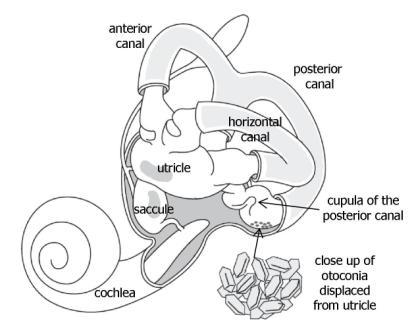Many people experience dizziness or vertigo every year. There are many types or causes of vertigo, but one of the most common is BPPV (Benign Paroxysmal Positional Vertigo). The diagnosis of BPPV has increased in recent years as the knowledge of this condition has grown. So, what is BPPV?
- The inner ear is made up of 3 semicircular canals which help to tell your head/body where it’s at in space or where its moving
- Within each canal there are “crystals”, called otoconia, which lie on top of a gel like “bed” also containing nerve endings
- When you move your head, the crystals pull on the nerve endings and send a signal to your brain about the movement
- In simplified terms your balance is comprised of information from your vision, your inner ear (vestibular system), and sensation from your feet
- BPPV occurs when a loose crystal in a canal is moving freely, sending random, conflicting, signals to your brain
- When your brain gets conflicting information about where you’re moving or where you’re at in space you get dizzy and/or nauseous
- BPPV is often characterized by eye twitching, called nystagmus, as they try to adjust to the conflicting signals
Luckily, BPPV is a relatively benign condition, which can be treated by trained PT. Often times this can be fixed in a single visit, with a series of specified, individualized, maneuvers. Sometimes, additional visits are needed for “retraining” of the balance systems. So if you are suffering from vertigo go see a Physical Therapist and we can get you back to your normal life.







